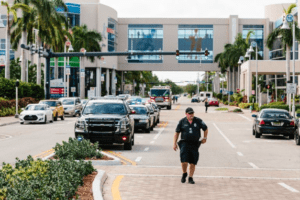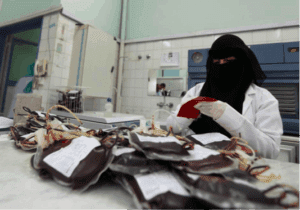Nursing Home Residents Die After Irma-Related Power Outage
As details continue to emerge, families in Florida are mourning the loss of at least eight nursing home residents after a Hurricane Irma-related power outage. Local authorities were only alerted Wednesday morning as a slow stream of residents began to arrive at Memorial Regional Hospital, located next to The Rehabilitation Center in Hollywood, Florida. Hospital workers walked down the street to the facility to find dozens of patients in critical condition after the air-conditioning failed. Now, the nursing home’s administration and local authorities are facing sharp criticism about the adequacy of contingency planning and the speed of response. Hospitals around the world struggle with those same back-up plans.

Global Weaknesses in Infrastructure and Contingency Planning
This week’s story from Florida is one example of a major international problem that desperately needs attention: the lack of contingency planning and reliable infrastructure. In India, at least 90 children died in two separate incidents in which the public hospitals’ oxygen supplies ran out due to unpaid bills. Malawi is one of dozens of countries that is in a constant state of blood shortage. Even a top-ranked hospital, NYU Langone, was forced to evacuate 215 patients during Hurricane Sandy when the hospital lost power and its generators failed.
Around the world, hospital systems and local governments struggle to establish back-up systems and manage the day-to-day infrastructure elements of their operations. Emergency planning can be expensive. It doesn’t fit neatly on a bumper sticker and it doesn’t make a political campaign exciting. And most of the time, we don’t see the benefits of contingency planning and behind-the-scenes logistics efforts until we desperately need them to work. This week in Hollywood, Florida, we saw the result when those plans failed.

How to Protect Yourself at Home and Abroad
While we’re at home, we need to advocate in our communities and at a national level for emergency management and planning. Congress recently approved a $15 billion in disaster aid following Hurricane Harvey, but organizations like FEMA need support before disasters happen for emergency planning.
When you or your organization travel, it is critical to develop contingency plans which include hospital and evacuation options for medical emergencies.
Here are some of the top indicators to keep in mind when selecting a hospital:
- Availability of emergency medicine specialists and trauma surgeons
- Availability and safety of blood products for immediate release
- Specialized cardiology and neurology teams in case of stroke or heart attack
- Mass casualty and evacuation plans to cover emergencies like natural disasters or terrorist attacks
This information can be difficult and time-confusing to gather and analyze as an individual; contact VIGILINT for itinerary-specific medical contingency plans (MCPs) that provide travelers with clear guidance to the best-prepared local hospitals and evacuation options.
